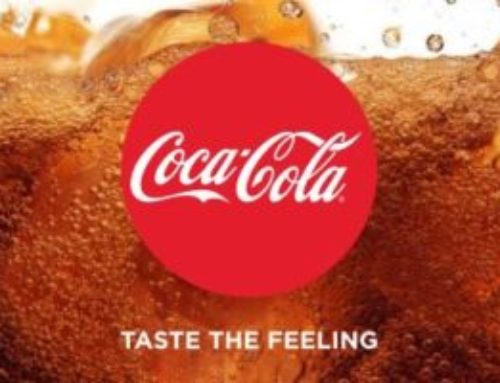Investors were excited by MCD’s recent announcement that it would start selling all-day breakfast beginning next month. The stock finished up nearly 3%, outpacing the market (+1.8%) and its peers (+1%). We are less confident that all-day breakfast will reverse declining domestic store sales and keep MCD out of our Top 20 Dividend Stocks list for now – the dividend payment is nice and secure, but the stock’s total return and dividend growth potential appear much less certain to us.
START A FREE TRIAL AND FIND THE BEST DIVIDEND STOCKS – CLICK HERE
Many of MCD’s competitors already sell breakfast items throughout the day, so joining the foray could help it reclaim some market share. Although breakfast already accounts for about 25% of MCD’s total sales, management is very optimistic about this initiative, hoping that selling the Egg McMuffin all day could boost sales by as much as 2.5% per year.
Is breakfast enough to turn around growth at MCD’s? Last quarter, the company’s global comparable sales decreased 0.7% compared to the prior year’s quarter, reflecting negative guest traffic in all major segments. In the US, results were even worse with comparable sales falling 2%.
Lackluster results in the US, where MCD derives 40% of its operating income, are nothing new. As seen below, courtesy of Business Insider, US same-store sales started decelerating in early 2012 and have remained mostly negative for the last two years (-0.2% in 2013 and -2.1% in 2014):
Not surprisingly, the deceleration in same-store sales coincided with the stock’s underperformance. As seen below, MCD’s total shareholder return (“TSR”) significantly outpaced the market (represented by an upward sloping line) from 2002 through 2011 before dropping sharply as the stock stalled out:
The reasons for MCD’s struggles have been well documented and won’t be dwelled on here – slower service time and low quality staff, a bloated menu, rising health awareness and food quality expectations, brand credibility issues, a struggling US middle class consumer base, a massive store base (over 36,000 locations) that is slow to change, and disinterest from millennials.
On that last point, we took to Instagram to review how many followers per store each of the major industry players had. Instagram is used extensively by millennials and can perhaps shed a little light on which types of dining establishments resonate with them the most.
While it is far from a perfect measure, we can see MCD significantly trails most of the pack on a per store basis. This could be due in part to the sheer size of its store base and international operations, but the following of Shake Shack, In and Out, Chick-fil-A, and Chipotle are very impressive and speak to their greater relevance with millennials. While these peers are not perfect matches (most have higher price points on their menus), MCD’s brand seems to have much less credibility with the millennial generation.

With competitors, both within the burger domain and in other categories, moving to higher-end inputs (or at least perceived higher-end inputs) to better meet rising food quality expectations by consumers, MCD has fallen behind since this was never its niche. The company’s dollar menu has also created a big perception issue with what exactly MCD is serving you (how can it be so cheap?). While a Chipotle burrito has more calories than a quarter pounder, it is perceived to be a much healthier alternative in most consumers’ minds because of its visibly fresh ingredients. In the case of Shake Shack, it serves freshly ground, never frozen beef – a stark contrast to MCD’s frozen burgers that can sit for two to three weeks after formation before being consumed.
After several years of struggles, MCD put in place a new CEO earlier this year and announced a restructuring plan in May. The plan calls for MCD to sell 3,500 of its company-owned restaurants to franchisees so that 90% of its total restaurants will be franchised within four years, up from about 80% today. Such a move lightens MCD’s operating expenses and improves its margin structure – collecting franchising fees is far more profitable than running restaurants. Additionally, MCD plans to cut out $300 million in administrative costs. However, this amount represents only about 6% of MCD’s 2014 income and won’t help rejuvenate sales growth.
While these efforts seem like low-risk maneuvers to stabilize or improve earnings over the medium-term, more needs to be done to improve sales. MCD will provide even more information about its capital allocation and plans in November once it has completed its strategic planning, but it is in the middle of several experiments, including shrinking the menu (gradually), offering self-serve kiosks, and implementing all-day breakfast.
We think the self-serve kiosks and all-day breakfast offerings lack innovation and could further add to MCD’s declining quality of service with longer wait times, more confusion in the kitchen, and less menu simplification. The scarcity value of MCD’s breakfast offerings will also be removed.
We are skeptical that these are enough changes to restore US growth, but they are a step in the right direction. However, we wouldn’t be surprised if more drastic measures are needed that address more of MCD’s core challenges – greater menu simplification (don’t try to be everything to everyone with salads, etc. – appeal to core burger / fry / shake customer while improving service time), reduce or eliminate dollar menu items (gradually reduce “poor quality” perception / reality), consider a big ingredient shake up (drop preservatives or artificial ingredients or switch to anti-biotic free chicken / beef like Chick-fil-A is planning), and emphasize value over price. We do not proclaim to be fast food experts, but these issues seem much more critical to MCD’s long-term success than self-serve kiosks and all-day breakfast.
The good news is that MCD’s business is incredibly resilient and has a solid balance sheet. The company is very international – only 40% of its operating income is derived in the US – which supports MCD’s expectation that global same-store sales will turn positive next quarter despite continued softness in the US. Longer-term, MCD can continue growing in China and other developing economies where it has fewer restaurants per capita compared to the US and middle class growth will remain in an uptrend.
Additionally, many of MCD’s customers are less health-conscious and, therefore, more accepting of the products’ taste versus cost trade-off. For many of these customers, the pricier menus at rising burger joints like Shake Shack or alternative food categories like Chipotle are also beyond their reach. Burgers are also the number one dine-out segment in America, and that seems unlikely to change anytime soon. With MCD’s top real estate locations, cash will continue rolling in for a very long time.
Some investors also like to point out the possibility of MCD converting into a REIT, and management has seemed open to the idea – in July MCD’s CFO said the company will consider all financial options to boost shareholder value and update investors in November. Glenview Capital Management, a hedge fund, has written to its investors that it believes MCD could unlock at least $20 billion if it spun off its US real estate
Hedge fund chief Larry Robbins, of Glenview Capital Management, said in a March letter to investors that McDonald’s could unlock at least $20 billion in value if it were to spin off its U.S. real estate. With a current market cap of $90 billion, this is would certainly be needle-moving, if correct. A REIT structure could be appealing because REITs often trade at significantly higher multiples and do not have to pay much tax as long as they pay out most of their profits as dividends.
The downside to selling off its real estate would be a loss of rent collected from franchisees. Rent revenue accounted for over 20% of MCD’s total sales last year and has increased by more than 25% since 2009. MCD would then be on the hook for paying rental expense on its company-owned operations, and it would be left holding retail operations (with no underlying property ownership) facing gradual decline (at the moment). Beyond the numbers, moving to a REIT structure could further jeopardize MCD’s already-fragile relationship with its franchisees – a REIT has incentive to push through faster rent increases to maximize profits, whereas MCD would prefer its franchisees to operate their businesses from a position of greater financial strength. While it’s not out of the question, we would be very surprised if MCD announced a REIT conversion in November. If it ever were to consider a conversion, we think the timing would more likely be in 3-5 years once (if) it overcomes fundamental challenges in the US and has less company-owned stores (less rent expense) as part of its refranchising plan to move from 80% franchised to 90%.
With that said, let’s take a look at MCD’s dividend.
Dividend Analysis
We analyze 25+ years of dividend data and 10+ years of fundamental data to understand the safety and growth prospects of a dividend. MCD’s long-term dividend and fundamental data charts can all be seen here.
Dividend Safety Score
Our Safety Score answers the question, “Is the current dividend payment safe?” We look at factors such as current and historical EPS and FCF payout ratios, debt levels, free cash flow generation, industry cyclicality, ROIC trends, and more.
MCD scored a high Safety Score of 69, a nice ranking that suggests its dividend is safer than 69% of all other dividend stocks.
MCD’s trailing twelve months EPS payout ratio (78%) and free cash flow payout ratio (75%) are above levels that would interest many dividend growth investors. While this level would be risky in more cyclical industries, the more stable nature of the fast food industry alleviates these concerns. However, a higher payout ratio does make a company more dependent on earnings growth to continue raising its dividend payout.
As seen below, MCD’s payout ratios more than doubled over the last decade as the company grew its dividend faster than earnings and free cash flow. Future dividend growth will be much more dependent on earnings growth than it was over the past decade.
Source: Simply Safe Dividends
For dividend companies with enough operating history, it’s always a prudent exercise to observe how their businesses performed during the financial crisis. Our Stock Analyzer tool lets us see how a company performed during the financial crisis in one click. MCD’s reported sales were down just 3% in fiscal year 2009, and operating margins actually expanded, signs of a very strong business. As restaurant mix shifts from 80% franchised to 90% franchised in coming years, we would expect to see a further rise in operating margins.
Source: Simply Safe Dividends
We can also see that MCD has demonstrated its strength by generating and growing free cash flow per share over the past decade, although growth has halted over the past few years. Rising cash flow is very important because it supports continued dividend growth without expanding the payout ratio.
Source: Simply Safe Dividends
While payout ratios, margins, industry cyclicality, free cash flow generation, and business performance during the recession help give us a better sense of a dividend’s safety, the balance sheet is an extremely important indicator as well.
Given the stability of MCD’s business, its predictable cash flows, and extremely valuable real estate holdings, its balance sheet could probably handle more leverage than the typical company. As seen below, MCD could cover its entire net debt with 2.1 years of EBIT and makes plenty to comfortably cover interest expenses (EBIT / Interest Expense = 11.9x):
Dividend Growth Score
Our Growth Score answers the question, “How fast is the dividend likely to grow?” It considers many of the same fundamental factors as the Safety Score but places more weight on growth-centric metrics like sales and earnings growth and payout ratios.
MCD’s Growth Score is 35, meaning its dividend’s growth potential ranks slightly below the average dividend stock’s growth potential (a score of 50 is “average”). The company’s 75%+ payout ratios, struggling same-store sales growth, moderated stores expansion plans, large market share, and mature industry all contributed to the slightly lower score.
However, even if sales continue struggling in the near-term, MCD’s restructuring efforts, refranchising, and continued share repurchases seem likely to drive at least mid-single digit earnings growth over the next few years. If the company surprises us with a REIT conversion this fall, shareholders would also enjoy a quick return of capital.
As seen below, MCD has increased its dividend for more than 20 consecutive years (since 1976 to be exact), growing the dividend at a 9% annualized clip over the last five years and maintaining its status as one of the dividend aristocrats. However, we can see the rate of dividend growth has decelerated considerably over the past decade, with the compound annual growth rate falling from 19% over the last 10 years to just 5% last year. Long-term dividend growth investors might want to look elsewhere and consider some of the stocks in our Long-term Dividend Growth portfolio.
Source: Simply Safe Dividends
Valuation
MCD’s dividend yield is 3.5%, a Yield Score of 66 in our database – this means that MCD’s current dividend yield is higher than 66% of other dividend stocks in the market. While it is nice to see a slightly above-average yield, it is less appealing in light of MCD’s struggle to grow sales. However, given the safety of the dividend, MCD still appears appropriate for income-seeking investors less concerned with total return prospects. With that said, the following stocks have higher Dividend Safety Scores and yields than MCD – PG, VZ, PAYX, WDR. They might be worth further investigation.
MCD also trades at more than 19x forward earnings estimates, in line with its historical multiple and a meaningful premium given its lack of growth.
START A FREE TRIAL AND FIND THE BEST DIVIDEND STOCKS – CLICK HERE
Conclusion
There’s absolutely nothing wrong with owning MCD’s for its current dividend payment. However, dividend investors should not delude themselves about future dividend growth potential – the 19% annualized dividend growth of the last decade won’t be repeated with MCD’s elevated payout ratios and struggle to sustainably grow its earnings beyond a mid-single digit rate. The company’s many strengths provide it with plenty of time, cash, and optionality to restore US same-store sales growth and unlock value for shareholders, but we think it will take much more than all-day breakfast, self-serve kiosks, and the like. The company faces serious brand credibility issues that will likely require more serious changes (e.g. removing preservatives, dropping the value menu, stripping the menu further) before sustainable improvement can be realized.














Leave A Comment